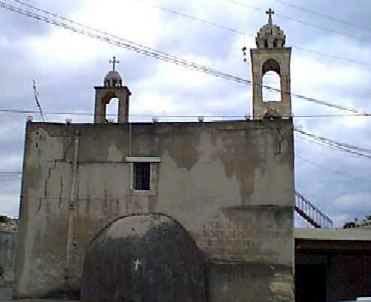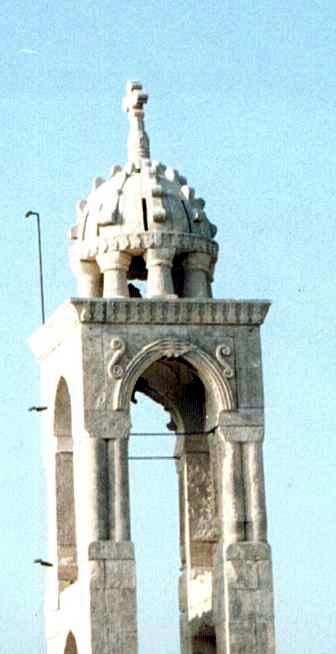But what made up for this loss are the beautiful arch, the very similar Byzantine sculpture and icons, the antique dome and iconostas existing in Saint Saba church. The dome built from over than 100 years is unique of its kind because of its marvelous sculpture designs. The iconostas, or the sculpted wall consecrated for icons' placement, is a real chef d'oeuvre founded in 1875.
On the other hand, what marks also Kafarhata is the multitude of empty sarcophagus spread in Kalah El-Burj, Al-Chaluk, and near Saint Mama monastery as well as the discovery of some jars full of silver coins while digging a land in Al-Karkafi. It's reported that an ancient village had stood up there a long time ago and had dramatically disappeared. It's likely that a huge treasure is buried there but nothing has been confirmed. Still we must wait the archeological digging to be sure.

Mar Saba on a rainy day. The patron Saint of the village with the antique dome on top that was built more than 100 years ago with its marvelous sculpture designs. The "Wakf" has added a large hall equipped with audio installation that is used during various occasions. (photo by Fares Esber)

Closer look at Mar Saba old amtique bell tower. (photo by Nicolas Choueiri)
Facts gathered by Marleine Chaiban in the light of the book written by Mr. Gebran jabbour and entitled "Kafarhata History: its families and monuments".
